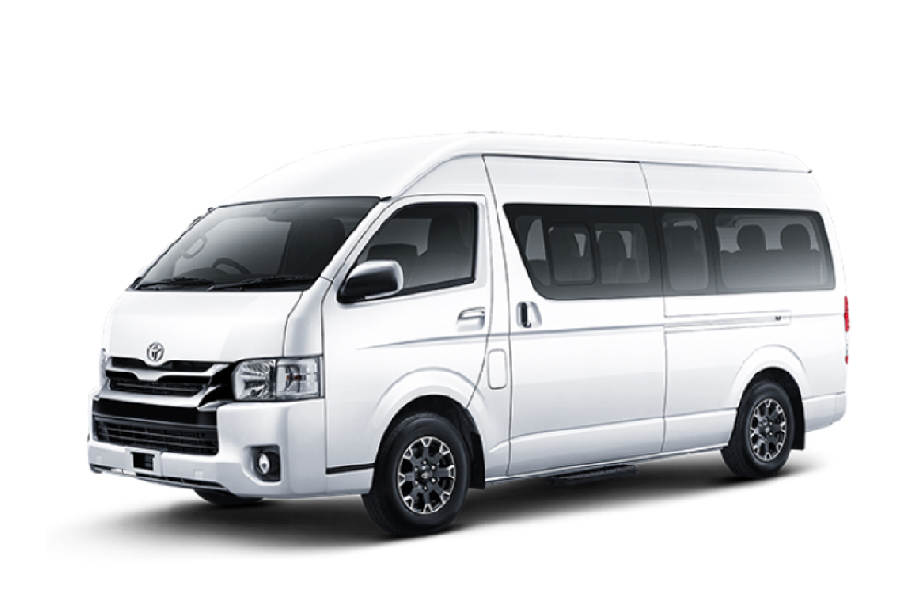Toyota HiAce
The Hiace was primarily designed as a commuter vehicle, able to transport up to 8 people. With this goal in consideration, the HiAce exterior dimensions and engine displacement were in compliance with Japanese Government regulations so as to encourage sales, and accommodate the most passengers by utilizing a cabover body style, with the engine installed underneath and between the front passengers. It was a smaller alternative to the larger Toyota Coaster minibus, and was introduced to Japan after the 1950 Volkswagen Transporter, and the 1961 Chevrolet Greenbrier cabover vans. It was introduced in the same year as the much smaller Toyota MiniAce, which was based on the Toyota Publica, a predecessor to the Toyota Corolla.
The fifth generation HiAce became available for sale in late 2004 as a wide long-wheelbase wagon, wide super-long-wheelbase high-roof "Grand Cabin", long-wheelbase van, long-wheelbase high-roof van and a wide super-long-wheelbase high-roof van. In this generation of the HiAce, the gear lever has been moved to the dashboard to enable easier movement in the cabin. Transmission choices range from a five-speed manual and four-speed automatic.
Most models use a four-cylinder DOHC engine, in a variety of forms, a 1TR-FE 2000 cc or 2TR-FE 2,700 cc petrol engine, or a 2KD-FTV 2,500 cc or 1KD-FTV 3,000 cc D-4D turbodiesel engine. Two of these engines are available in Malaysia, the 2.5 L turbodiesel, offered in a choice of panel van or window van; and the 2.7 L petrol, that comes only in the window van option. At least some general export market HiAces are powered by the 5L-E 3,000 cc diesel engine.
Covered Pick Up Areas
Seminyak, Legian, Kuta, Sanur, Canggu, Denpasar, Benoa Harbour, Airport
Please contact us for pick up in different areas


